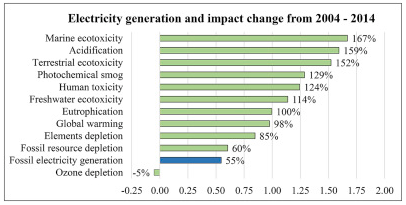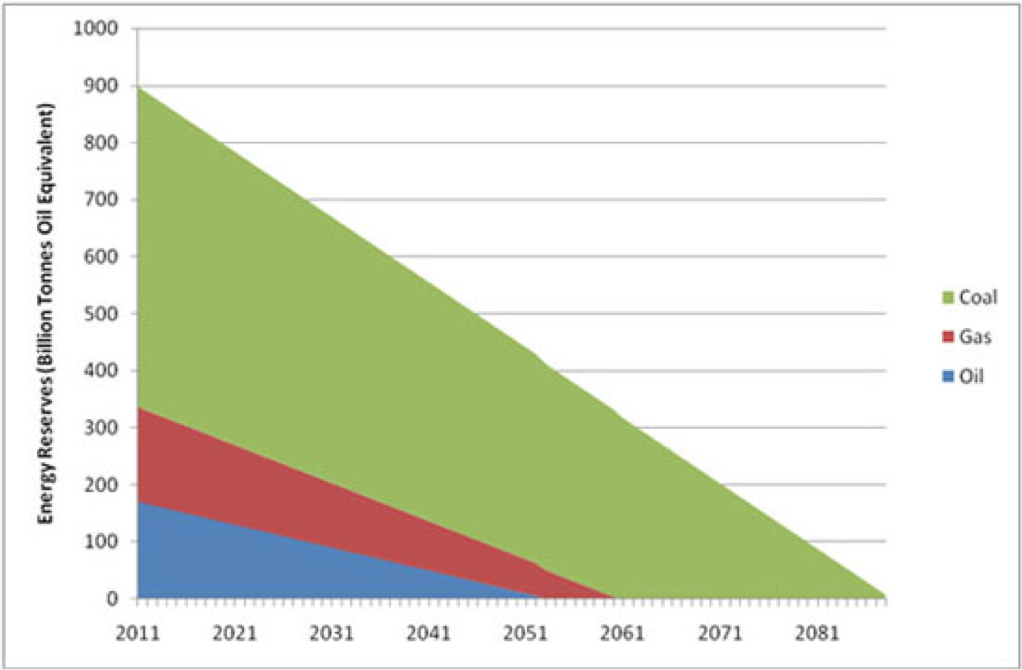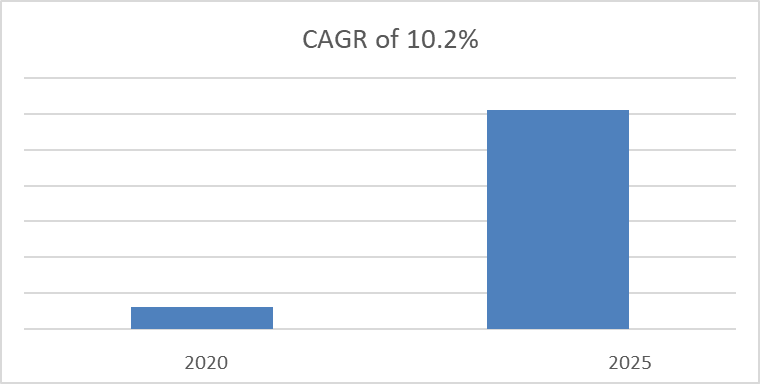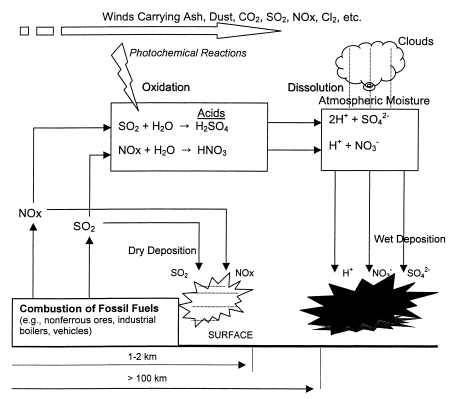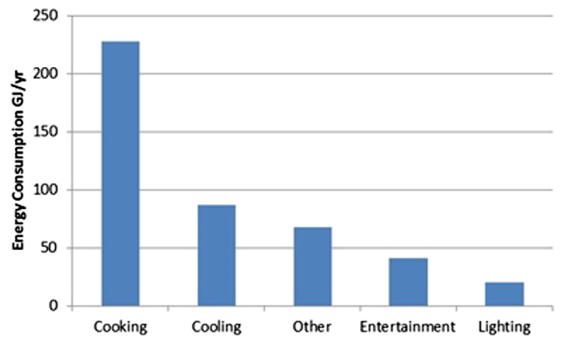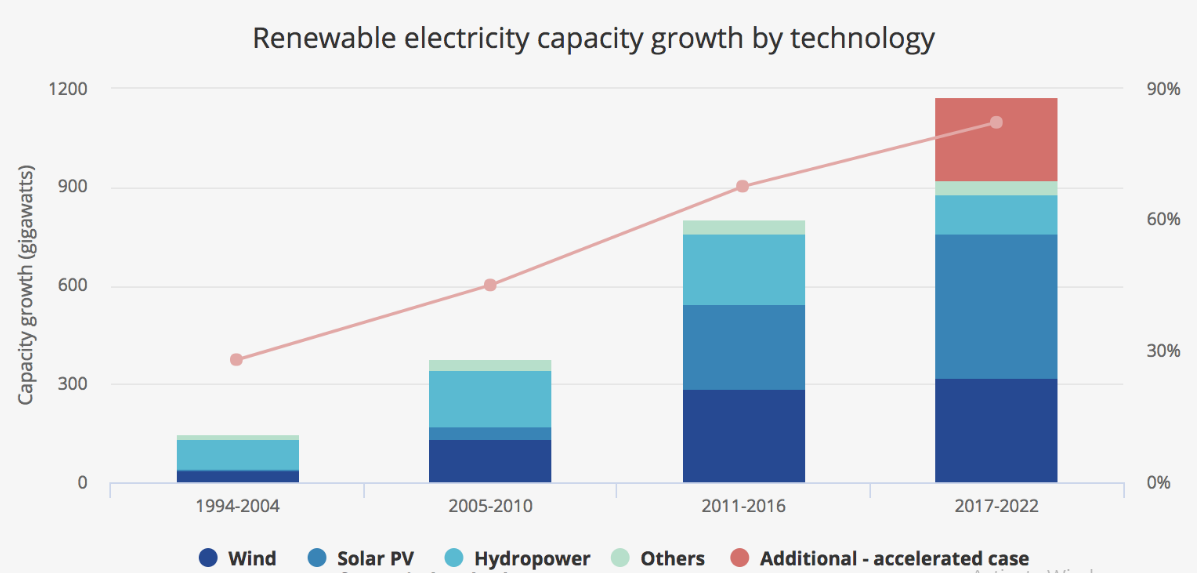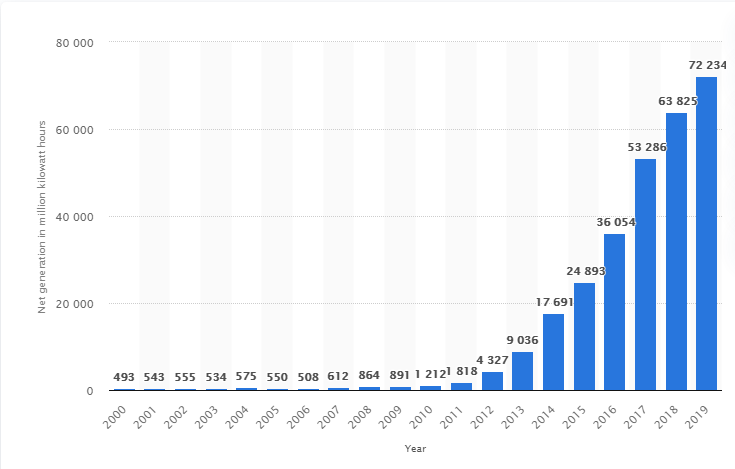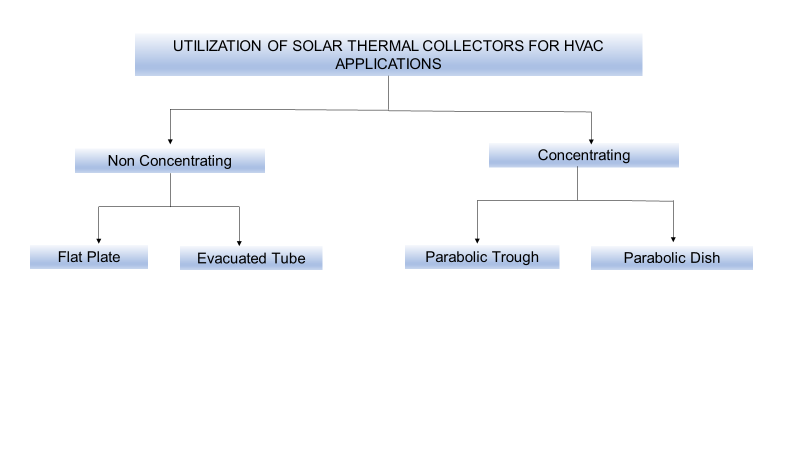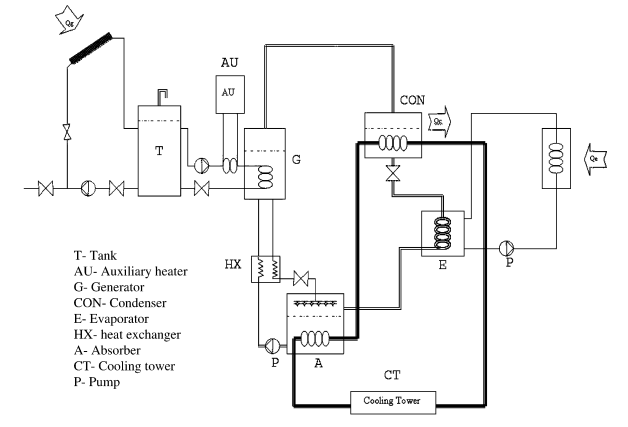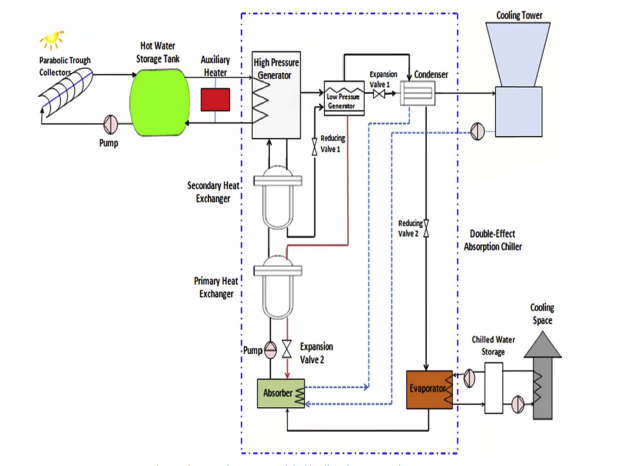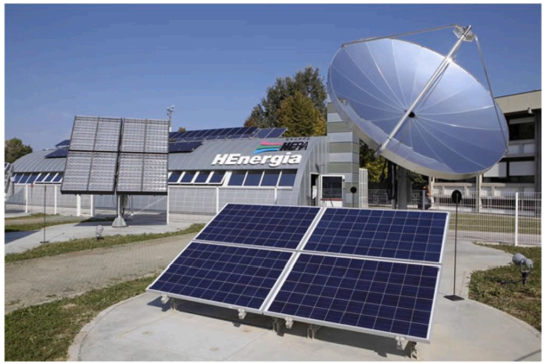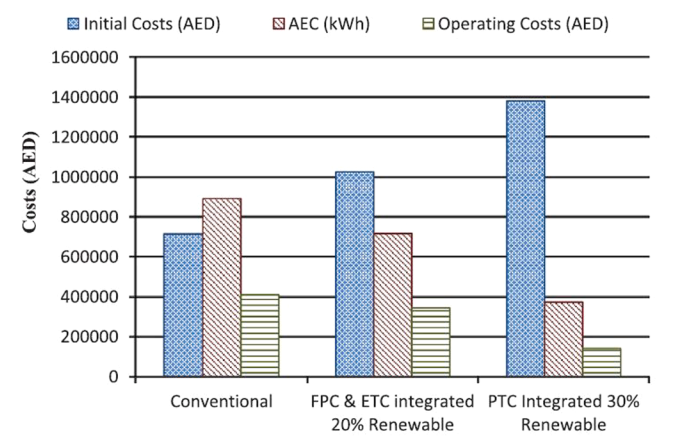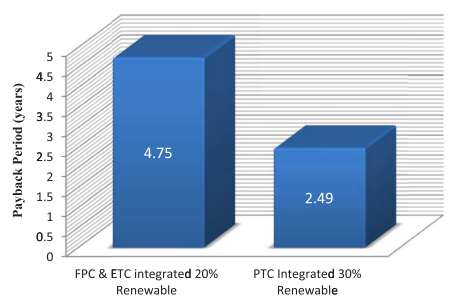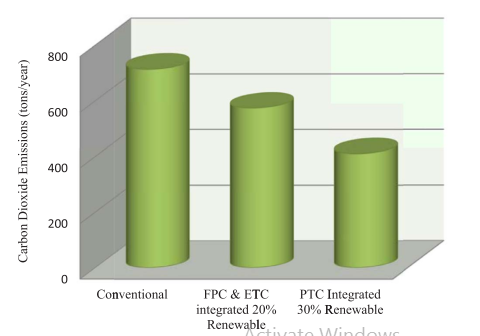Memoria Investigaciones en Ingeniería, núm. 24
(2023). pp. 69-91
https://doi.org/10.36561/ING.24.6
ISSN 2301-1092 • ISSN (en línea) 2301-1106
Utilization of Solar Energy for Cooling Applications: a
Review
Utilización de la Energía Solar
para Aplicaciones de Enfriamiento: una Revisión
Utilização de Energia Solar para Aplicações de Resfriamento:
uma Revisão
Atif Shazad [1], Muhammad Uzair [2]
Recibido: 08/03/2023 Aceptado: 15/05/2023
Summary. - Major portion of energy in the residential
sector is consumed to provide the human comfort. The use of conventional energy
resources creates the problem of global warming. Due to severe impact of released gases on the
environment, there is needed to use the alternative energy resources to
maintain the human comfort zone. The use of different solar energy conversion
techniques is making a promising contribution to provide the clean energy. The
purpose of this study is to provide an overview of recent advancement in the
use of solar energy to provide the indoor climate comfort. The use of
non-concentrating and concentrating conversion techniques are investigated in
detail. The study also discusses about the enticements of solar energy to
attract the investment in the merger of solar energy and human comfort
industries.
Keywords: human
comfort; solar energy; heating; cooling; solar thermal; humidification.
Resumen. - La mayor parte de la energía en el sector
residencial se consume para proporcionar el confort humano. El uso de recursos
energéticos convencionales crea el problema del calentamiento global. Debido al
severo impacto de los gases liberados en el medio ambiente, es necesario
utilizar recursos energéticos alternativos para mantener la zona de confort
humano. El uso de diferentes técnicas de conversión de energía solar está
haciendo una contribución prometedora para proporcionar energía limpia. El
propósito de este estudio es proporcionar una visión general de los avances
recientes en el uso de la energía solar para proporcionar el confort climático
interior. Se investiga en detalle el uso de técnicas de conversión no
concentradoras y concentradoras. El estudio también analiza los incentivos de
la energía solar para atraer inversiones en la fusión de las industrias de
energía solar y comodidad humana.
Palabras clave: comodidad
humana; energía solar; calefacción; enfriamiento; solar térmica; humidificación.
Resumo. -
Grande parte da energia no setor
residencial é consumida para proporcionar o conforto humano. O uso de recursos
energéticos convencionais cria
o problema do aquecimento global. Devido
ao forte impacto dos gases
liberados no meio ambiente, existe a necessidade de utilizar os recursos energéticos
alternativos para manter a zona de conforto humano. O
uso de diferentes técnicas de conversão de energia solar está dando uma contribuição promissora para
fornecer energia limpa. O
objetivo deste estudo é
fornecer uma visão geral do avanço recente no uso da energia solar
para proporcionar conforto climático interno. O uso de técnicas de conversão de não concentração e concentração é
investigado em detalhes. O estudo
também discute os atrativos
da energia solar para atrair
investimentos na fusão das indústrias de energia solar e conforto humano
Palavras-chave: conforto
humano; energia solar; aquecimento;
resfriamento; solar térmico; umidificar.
1. Introduction. - Environment
Protection is the ultimate goal to save the world from
catastrophic incidents which happened due to change in ambient conditions.
Along with environment safety human comfortable is also on prime level to
ensure better working in any field. Hence, due increase in demands of energy
fluctuates energy prices as well as global temperature limits. Developments
through all over the world produce significant changes on environment.
Lifestyle of humans has been changed and sumptuous living standards required
energy to perform all these actions. Greater energy demands create challenges
at environment level to sustain the drawbacks of energy generation. Burning of
fossil fuels produces hazardous gases in form of power plant’s discharge; the
same discharge in gaseous form produces air pollution which is the reason of
many health issues. Impact of these gases on global warming is also alarming
and need to be reduced due fluctuations in climates of entire globe.
The problem of dangerous globe climate fluctuations required reduction
of fossil fuels burning and utilized renewable energy approaches for energy
generations like solar, Wind etc. The renewable energy utilization for energy
production is the only way to reduce the greenhouse gas emissions and mitigate
the effect of climate changing. Figure 1 indicates the harmful effects of
fossil fuel power plants on human society. [1] To reduce carbon emissions
produced by burning of fossil fuel in Iran, hence several hybrid renewable
energy systems have been utilized for electricity generation. The collection
and evaluation of data been performed and concluded that hybrid energy
configuration provide the intended results like price of electricity is .15$/KWh and 15.6% investment return. The study indicates three
advantages like CO2 reduction, interest of stake holder and sustainable energy
source. [2]
|
|
|
Figure I.-
Fossil fuels impact on Environment [13] |
Due myriad negative
impacts on environment, increase in fuel prices and shortage of fuel compel
governments to introduce new policies for adopting renewable energy for
electricity generation. [3,4] Due consistent shortages in fossil fuel supply
from reservoirs and due apex in carbon emissions, advanced countries are
adopting renewable energy on large scale. [5,6]
2. Fossil fuels and Energy Shortage. – Dependency on fossil fuels
needs to be reduced due adverse effects on environment, however peoples of
policy making, and energy analysis divisions do believe in that utilization of
renewable energy is the prime solution to mitigate emissions and generate energy.
[7,8] most of carbon emissions relate with power sector but transport sector
also played a vital role in using fossil fuels and producing CO2 emissions. [9]
A research study performed in 2014 on Belgium to consider the shortages and
excessive amount of electricity by fossil fuels and nuclear sector. It is
concluded that Belgium should replace their current power production technology
to renewable in 12 years else their assets would be depleted. [10] South Asian
countries are largely depending on coal power generation due abundance amount
of coal especially China, India etc. Extraction of coal from mines also produce
hazardous impacts on society by releasing toxic gases like Carbon Monoxide (CO)
etc and effecting air quality. Hence, such countries
are shifting from conventional resources to renewable because they receive
5000trillion kWh insolation on yearly basis. [11,12]
Depletion
of fossil fuels is an issue which needs to be addressed, utilization of fossil
fuels in energy and transport sector gradually mitigates the reservoirs of
fossil fuels. Oil demands increased by 1.3% in 2018 and today share of
electricity generated by Oil burning are 40% and transportation sector
dependency on oil is around 96%. [13, 14]
|
|
|
Figure II.-
Energy reserves in billion tons of oil equivalent [17] |
A
huge number of consumptions i.e. 875 billion barrels
per annum is used on transportation. Gross utilization of world is estimated
about 11 billion tons per annum. Reduction of crude oil reserves is at 4
billion tons per. The current situation indicated that many oil wells reach
their dead point and 1000 billion barrels remained. [15] Figure 2 indicates the
reduction of fossil fuels relating rate of consumption and production. The
mentioned figure indicated the endpoints of fossil fuels reserve
and it is alarming for world that endpoints are very close, hence it is
required to shift from fossil fuels to renewable sources which are long
lasting. [16]
3. Impacts of Modern
Lifestyle on Energy Demand. – Energy produced in
Power plants is utilized for many applications and one of the chief requirements
is to cater the cooling load. Due increased population level of the world
demands of energy for HVAC system has been increased by enormous amount. Due enhancement in lifestyle the Air
conditioning demands is increased, and global warming also played vital role to
amplify the cooling loads demands. Vapor compression systems are mostly
utilized by residential buildings which impose pressures on national grids as
well as causing environmental pollutions due to energy production through
fossil fuels. [17]
Residential building sector consumed around 55%
of the global energy production and cooling loads comprised 25% energy demands
for producing thermal comfort. These Vapor compression systems for producing
the intended result of cooling utilizing CFC’s and HFC are as refrigerant which
create serious environmental issues like Ozone Depletion. Figure 3 represents
the increment in HVAC demand. [18]
|
|
|
Figure III.-
Growth trend of HVAC Demand [19] |
Global warming is the intendant results of
modern living standards because luxurious transport and houses demands of
energy like energy required for cooling of building and refrigeration purposes
etc. which comes from burning of fossil fuels. The population of world around
7.59 billion peoples depend on many natural resources. Increased energy demands
produce adverse effects like acid rain is one of the most highlighted issue regarding environmental pollution. The sulphur dioxide from coal power plants combines with water
content in air and results in acid rain which can acidify lakes and streams,
which are chief sources of fresh drinking water in many countries of world.
[19] Release of refrigerants i.e., chlorofluorocarbons (CFC’s) are very
cumbersome for Ozone layer in stratosphere. Due increase in temperature and
alterations in lifestyle, human comfort zone is necessary for their health, but
it brings many drawbacks like utilization of HVAC systems in buildings produce
harmful effects to ozone layer and consumed major portion of electricity in
household appliances. The equality maintained by Ozone for earth is due to its
Ultraviolet rays’ absorption (240-320 nm) and Infrared absorption. Ozone
depletion allowed the Ultraviolet rays which enhances the rate of skin cancer,
eye damage etc. Figure 4 represents the schematic of Ozone depletion process.
[20]
In China, a study has been performed to
investigate the effect of CFCs releasing from obsolete residential
refrigerators and comparison conducted between other recognized ozone depletion
substituents. The results revealed that the per annum increments in residual
CFC-11 and CFC-12 has reached to higher value of 4600 and 2300 tons
respectively in 2011 and now decreasing to zero until 2020. The amounts of
HCFC-141b and HFC-134a are increasing and contribution ratio to ozone depletion
will increase from 25% in 2011 to 34% in 2018. Hence, obsolete household
refrigerators in china contribute its maximum to
ozone depletion. [21]
|
|
|
Figure IV.-Schematic
of Ozone depletion [20] |
The current world challenges are controlling
and mitigating the harmful effects of greenhouse gases, the projected intensity
of carbon in 2050 is around 0.45 kg of C/yr.W. The
intensity is much lower than fossil fuels. To achieve this goal the
contribution of fossil fuels in power generation would alter to limited extent.
Reduction in dependency of fossil fuel power system can control the steep
shortage of fuel. The calculated amount of power required to meet the carbon
intensity challenge in 2050 is 10TW from any other source and CO2 amount will
be 550ppm. [23] The major issues of environment are release of CFC’s and CO2
which produce serious impacts on society. Figure 5 represents data of Energy
consumption for Indonesia which represents most of the energy are utilized by
cooking and cooling equipment’s.
|
|
|
Figure V.-Energy
consumption graph in Indonesia for household [22] |
Hence, it is very essential to alter the power
generation techniques and utilization of renewable energy for power generation
purposes. Among the renewable energy Sun is the key part of the system because
every renewable source derived from Sun, hence solar energy can change into
enormous amount of power. The solar energy is environmentally friendly, and no
pollution resulted due utilization of solar energy, the major impact of solar
energy on modern lifestyle to change the residential style like consumption of
solar energy for cooling purposes. Solar energy played a vital role to control
the ozone depletion by controlling the utilization of CFCs due consumption of
solar energy for HVAC systems. The energy generated by solar can utilized for
household cooling apparatus and solar energy can directly utilized in
absorption system for enhancement in Coefficient of Performance (COP). Solar
energy can converted into electricity through
Photovoltaic (PV) and this energy may utilize for refrigeration system, but due
to very low efficiency of PV system, it is not feasible to generate energy by
PV.
4. Utilization of Solar Energy for Energy Generation. - The world is now shifting from conventional technologies of energy
generation to non-conventional systems. Figure 6 delineate the growth of
renewable in different technologies and it is clearly didactic in Figure 6 that
the growth is very rapid to maintain the stability in climate level.
|
|
|
Figure VI.-Share of Electricity by Renewable [24] |
Solar power among renewable energies is very
mature now and most of the world achieving handsome irradiance factor. Hence,
consumption of Solar energy is greater than all other renewable sources due its
maturity. In 2019, United States solar power production culminate to 70 TW from
Solar thermal and Photovoltaic, in comparison with 2011 when it just below 2
TW. The leading solar power utilities of United States are in California,
Florida, Texas, and North Carolina. Figure 7 described the increment of solar
power generation in USA.[25]
|
|
|
Figure VII.-Solar
Power Generation in USA [25] |
5. Solar Energy for
Refrigeration applications. - The demand of air
conditioning is increasing, and this requirement is achieved by using vapor
compression systems. The utilization of vapor compression system is very
expensive due high demand of electricity; hence it imposes pressure on national
grids. The HVAC load comprised of sensible and latent load. A good air
conditioning system should cumulatively deal with both loads. The drawback of
vapor compression system is relevant to environmental pollution due green-house
gases emissions. Ozone depletion in upper atmosphere is the main cause of using
CFCs in conventional system. However, the demand of using such systems is increasing
at a rate of 6.2% up to 2014. [26]
Solar thermal collectors instead solar PV panels are utilized for
heating and cooling purposes with central air conditioning system mostly. Solar
thermal collectors also used for electricity generation but require large area
for installation. The main focus of this study is to
delineate the HVAC utilizations of most common solar thermal collectors which
are categorized in Figure 8. These below mentioned collectors are easily
available in local market. These thermal collectors provide the temperature
output within range of 60 to 240°C, non- concentrating thermal collectors are
suitable for low temperature applications and concentrating thermal collectors
are feasible for high temperature requirements. The two types of concentrating
thermal collectors are discussed in detail due high utilization and easy
availability in market.
|
|
|
Figure VIII.-Solar
energy utilization for HVAC by thermal Collectors. |
5.1 Non-Concentrating Solar Thermal Collectors. - The solar thermal collector in which areas of solar energy collection
and absorbing are same, hence absorbed solar energy is converted to heat and
utilize for useful purposes.
5.1.1 Flat Plate Collector.
- Direct conversion of solar energy into electricity is
done by using PV panels and this energy can be used for conventional air
conditioning and refrigeration system like vapor compression etc. However, PV
panels provide poor efficiency about 15-20 % maximum. Furthermore, due
intermittent nature of solar energy, storage system must be necessary.
Electricity storage after generation by PV panels is much expensive than
thermal storage. Hence, an alternative approach is necessary to utilize solar
energy at higher efficiencies with reduced storage problems. Therefore, solar
thermal collectors are utilized for harnessing solar thermal energy and its
utilization into heat driven cooling technologies. The solar thermal collectors
provide better efficiency upto 80% in comparison with
PV panels.
Flat plate collector is solar thermal energy collection equipment
utilized for space heating and cooling operations with absorption chillers,
water heating and various different applications. Flat
plate collectors are appropriate for low temperature purposes. Solar energy is
abundant in nature and availability marked free, hence Flat plate collector
capture the free solar energy and heat the water temperature up to 80°C. The
water at this temperature can be utilized for space heating and for bath
applications. It can be used with absorption chillers for cooling applications.
[27] Space heating and cooling focusing on setup efficiency which further
dependent on system components performance. The single stage 4.5 kW LiBr–H2O absorption chiller with Flat plate collector of
12m2 area was tested as a prototype. The average coefficient of thermal
performance (COP) is improved almost 100%. The experimental results have
revealed that the utilization of renewable energy with cold storage devices are
feasible with better COP. [28]
A study conducted on solar absorption system to categorize them as
single stage, double stage and multi-stage. Hence, FPC
will be utilized easily with single stage due generator temperature of around
80°C with COP of 0.7. The COP of double stage rose from 0.7 to 1.4 along with
increased temperature requirements in range of 100 to 150°C. Ultimately, the
peak value in COP of solar absorption system approached to 1.8 with multi-stage
effect driven with temperature source of 180–240°C. [29] Finally, it was
concluded that with the low temperature requirements it is feasible to utilize
FPC and ETC except with multi-stage solar system, concentrating collectors are
very suitable to fulfill temperature requirements. [30] Solar collectors may be
utilized with absorption and adsorption cooling system,
adsorption system has lower value of COP with temperature requirements between
45-65°C instead of absorption system with temperature requirements ranges
between 80 to 240°C. [31]
A study shown the performance of single effect 17 kW LiBr–H2O
absorption cooling system. The system required energy is 30kW which received by
boiler. The maximum (COP) of this system by utilizing Flat plate collector
achieved around 70°C. a numerical study also performed to stimulate the
practical states and declared a good match between numerical and experimental
data. [32,33] An integrated Solar system of Heating and Cooling had been
studied and results represents that with two Stage absorption cooler system of
100kW capacity, maximum COP achieved around 60 to 75°C. The COP achieve was
0.44 which is higher than previous COP 0.38. [34] An another
study performed in Jordan in the month of May that COP value of actual system
was improved to 0.55 due utilization of 1.5 ton solar cooling system. The
system contained Flat Plate Collector of 14 m2 and around five heat exchangers.
[35]
5.1.1 Evacuated Tube
Collector. - The temperature produced by FPC is around
70°Cwhich is easily utilized for space heating and cooling system. The high
temperature conventional system of heating should be replaced by an alternative
source which can generate temperature more than 100°C for some requirements.
The cooling technologies like absorption chiller system required heat energy which
is provided by Flat Plate Collector and Evacuated Tube Collector. [36-40]
A study has been conducted on Solar heating and cooling system to
investigate single stage LiBr–H2O absorption
chillers. Solar thermal source utilized are Evacuated tube and Concentrating
Photovoltaic solar collectors. Energy savings achieved by Evacuated tube
collectors are 74% and concentrating photovoltaic collectors often reach to
100%. [41] As proceeding with solar refrigeration system, the main obstacle
between these efficient system and market is the high manufacturing cost of
system. However, various techniques like single bed solar system of absorption
cooling method in hot temperatures were performed, and it is concluded that
optimum performance point obtained at 30 l/min flow rate. Other factors like
Coefficient of performance, specific cooling power and evaporator temperature
were 0.55, 39 W/kg and 6.6°C. [42]
The recent advancement in adsorption cooling technologies is to couple
solar thermal collector and cooling system in one single unit module. A
practical system in which a simple adsorption system resides inside of
evacuated glass tube collector with dimensions of length approx. 180 cm and
internal diameter is around 5.5 cm. The investigations performed experimentally
to optimize the adsorbent bed design and results shown that system is very cost
effective and energy saving. Zeolite 13X declared best due better rate of
adsorption and Solar COP of module was marked as 0.15. [43]
A research study conducted to investigate minimum collector area for one
ton of refrigeration in capital of Labnan, the
desired output was obtained by modelling and simulation of absorption system
associated with solar energy. The findings declared minimum area required for
collector per ton refrigeration is 23.3 m2 along with optimal storage of water
around 1500L for 7h each day. [44]
In Malaysia, a study has been performed to
investigate the optimum collector area for and slope angle along with water
storage system. The evacuated tube collector and LiBr-H20 absorption cooling
system are coupled, simulation was performed on TRNSYS program. Hence to
achieve continuous operation 0.8 m3 warm water tank is necessary. Results
delineate that 3.5 kW cooling system comprised of 35 m2 evacuated tubes and
solar collector slope was 20 degrees. Figure 9 described the schematic diagram
of absorption cooling system assisted with solar thermal collectors. [45]
|
|
|
Figure IX.-Schematic
of solar absorption cooling system [45]. |
5.1 Concentrating Solar Thermal Collectors. - The concentrating Solar thermal collectors utilize the reflection
technique to concentrate the reflected solar rays on receiver where the solar
energy converted into heat. This heat energy may utilize for space heating and
cooling purposes etc. However, due to high temperature production, these
thermal collectors can be used for power generation.
5.2.1 Parabolic Trough
Collector. - The parabolic thermal collector comprised of
parabolic reflector, absorber tube which contained working fluid and
transparent cover. [46] Sun tracking may utilize for better performance of
system. Parabolic collectors consider as an effective collector for double
stage chillers because of its high temperature generation up to 400°C. [47]
The realistic conditions can best delineate the performance of PTC
coupled with absorption chillers, the experimental
findings considered as reliable source. A study performed in 2005 ensured that
using PTC with absorption system provide a comprehensive solar assisted cooling
system. Concerning the above, solar assisted double effect absorption cooling
system was analyzed and concluded that COP of chiller unit was improved to the
value of 1.5. [48] Another experimental study conducted on PTC with 50 m2 area
integrated with 16 kW double effect system in 2010. The results indicated that
the design optimization make it possible to achieve 39% cooling load [49].
The concentrating collector can provide same COP by capturing less
irradiation in comparison with non-concentrating collectors which can absorb
more irradiation. In this regard, a comparative study conducted on double
effect absorption system integrated with PTC and FPC. It is concluded that
cooling unit exhibited same performance for FPC and PTC, COP value ranges
between 1.1 to 1.3. The FPC received 11 % more fractions as compared to PTC.
[50]
The relation of temperature of water with COP of chiller is in direct
proportion. A number of studies have been performed to
evaluate the fact. A research study on PTC coupled single stage (LiBr-H2O)
absorption system concluded the COP of system ranges between 0.11 to 0.27 when
temperature was around 90°C. Hence, low water temperature is directly producing
its impact in form of low COP. [51] A research study conducted on double stage (LiBr-H2O)
absorption system integrated with PTC, author concluded the COP within range of
1.04 to 1.29 when temperature of working fluid was 216°C [52].
A comparative study between solar thermal collectors likes FPC, ETC and
PTC had performed. The conclusion of comparison figured out that the PTC
integrated with double effect absorption system provided better and efficient
results. The study delineated briefly about overall efficiency of system and
investment cost due utilization of thermal collectors.[53] The integrated solar
cooling system ability to utilize PTC other than FPC and ETC provide better
results in case of double effect absorption system. The solar energy absorbing
fraction was proved highest on annual basis in PTC as compared to compound parabolic
trough and FPC/ETC. [54]
The mentioned absorption cooling technique utilizing heat for separation
of refrigerant from refrigerant/absorbent mixture. So many
refrigerant/absorbents are under study for achieving better performance vide
absorption cooling technique, however LiBr/H2O is the
most efficient solution for absorption cycle. [55] Furthermore, the absorption
cooling system categorized as single effect and double effect, comparison
performed between single and double effect system. Results indicated the
increase of COP of double effect system and study declared that double effect
system was providing 60- 70 % greater COP than single effect system. [56] The
single effect require low temperature like 80- 90°C
and temperature requirement of double effect is around 150-200°C.
The performance level of solar thermal
collector hence depends on heat energy provided to system for splitting of
refrigerant, hence performance of FPC and ETC are remarkable different than PTC
due variation on temperature levels. [57]
|
|
|
Figure X.-Double
effect PTC integrated absorption cooling system schematic diagram [58]. |
The potential of utilizing PTC with double
effect absorption system regarding cooling in buildings of residential area in
UAE was studied; the model considered in Figure 11 was appropriate which
provide continuous cooling at night in absence of sun. Hence, biomass energy
utilized for cooling after sun set down. The building with cooling load 366kW
was selected, the results concluded after research study delineated that hybrid
system with 30% solar share is best suited with annual energy savings of 519322
kWh and annual operating costs were reduced by 65%. The schematic diagram of
project is represented in Figure 10. The project payback period restricted to
2.5 years and environmental impact regarding reduction in carbon emissions is
304 tons/yr. [58] Another research study conducted on LiBr-H2O absorption
system which investigate solar system of moderate Temperature, hence a double
effect absorption chilling system with 50m2 surface area of PTC. The achieved
temperature was around 200°C and study showed results around higher COP value
of 1.2. [59]
Most studies revealed the performance of
LiBr-H2O as working fluids; however there are other
fluids available which may be utilized for solar absorption system like a study
performed on solar-geothermal cooling system in which LiBr-H2O was replaced by
sodium hydroxide-water. The results showed the improved COP of 0.71 was
achieved. Similar study on NH3-LiNO3 as a working fluid was executed without
geothermal energy source; the maximum COP attained was 0.56. Hence, there are
other working fluids which may consider as an alternative approach, but
LiBr-H2O is very common and easily available. [60,61]
5.2.2 Parabolic Dish
Collector. - Parabolic dish collector is another type of
concentrating collector which focus the beam of light on a focal point where
receiver is installed. The parabolic dish collector produces heat at various
temperatures. Dual axis tracking is utilized to follow Sun and dish collectors
concentrate the beam of radiation on receiver at focal point. Some systems are
coupled with heat engines like Stirling engine to generate electricity. The
Dish collector system can raise temperature up to 1000°C and achieve maximum
efficiency in conversion system of solar energy to electricity. [62]
Many studies have been performed to evaluate the performance of Dish
collector, hence a study conducted on behavior of Dish collector under wind
induced vibration. The effects on frequency and amplitude due to several
parameters like Pitch angle, velocity of wind etc. are investigated. Another
study conducted to investigate the effects of height angle and wind angle on
drag and lift coefficient of dish collector. [63, 64] The utilization of dish
collector for refrigeration applications are reviewed to compare the best solar
thermal collector for solar refrigeration applications.
The dish collector is renowned for high temperature applications like
electricity generation etc. The utilization of dish collector for refrigeration
applications is made possible through various research studies like a study
conducted on design and performance of a refrigeration system coupled with
solar dish collector. The achieved COP of the system was 0.172 and lowest
temperature achieved was 9°C. [65] The alternate of compressor in refrigeration
system was very necessary due very high energy demands and environmental
impacts. A research conducted in Poland on hybrid
system utilizing both Flat plate collector and Dish collector for absorption
system of refrigeration. The model was analyzed via TRNSYS software to evaluate
the performance by simulation as well as practically. The conclusions comprised
of dish collector efficiency were 70%, savings in energy consumption around 50%
and simple back period in range of 8.23 years. [66]
The combination of different technologies in one unit to generate the
feasible consequences, similar study had performed in Tehran on integration of
Dish collector with double effect refrigeration system, Solid oxide fuel Cell
(SOFC) and Organic Rankine Cycle for applications like space heating and
cooling and electricity generations. The results showed that efficiencies of
system were calculated as electrical efficiency of SOFC, electrical efficiency
of combine system and overall thermal efficiency. The values of efficiencies
are 41.5%, 48.7%, 79.5% respectively. The payback period calculated was 4.43
years. [67]
The experimental study was
performed on coupled system of solar and biogas energy for power generation and
cooling, heating applications. The combined system utilizes solar energy by
dish collector to drive a reactor of biogas energy. The utilization of fossil
fuel over year was around 57% and carbon emissions were reduced to 8.20%. [68]
The combined system coupled with solar energy is prone to higher fossil
fuel consumption as compared to hybrid solar system for absorption system which
comprised of FPC and PDC (Parabolic Dish Collector). The energy savings was
reached to 50% for a home of residential purpose by utilizing hybrid solar
system. [69] So many research studies were conducted on performance of PDC
integrated absorption system and impacts of climate on PDC coupled
refrigeration system. Hence, results indicated that ambient temperature has
strong influence on cooling performance of PDC driven refrigeration system. The
obtained COP was around 1.6. [70]
The performance indicator of PDC is ambient temperature as suggested in
above mentioned study; however, another study performed to evaluate the effect
of mean temperature of cooling fluid in cooling and heating arrangement. The
COP of refrigeration system coupled with PDC is dependent on mean temperature
of fluid and ambient temperature also. The results showed that the PDC was
providing warm water in winter for heating purposes and cooling supply in
summer at HEnergia center. Figure 11 showed the solar
refrigeration system which comprised of PDC at HEnergia
for domestic purposes. [71]
|
|
|
Figure XI.-PDC
installed at HEnergia center for cooling [71]. |
5.2.3 Cost Comparison of
Solar Thermal collectors. - The economic comparison
between solar thermal collectors is very essential to evaluate the payback
period because payback period is the only reason to induce people regarding
interest of money investment and time investment. The comparative analysis was performed
between FPC, ETC and PTC. The ETC and FPC were coupled with single effect
absorption chiller; however PTC was coupled with
double effect absorption system. The PTC
integrated refrigeration system payback period was 2.49 year and payback period
of FPC and ETC was calculated about 4.75 years. Figure 12 depicted the complete
cost analysis between FPC, ETC and PTC. Figure 13 and Figure 14 represented the
Payback period comparison and CO2 emissions comparison between FPC, ETC and
PTC. [72] Another comparison was accomplished in Riyadh, the comparison made
between double effect PTC integrated refrigeration system and single effect ETC
driven refrigeration system. The results concluded finally to utilize PTC
integrated system although the cost of this was 17% higher than ETC coupled
refrigeration system, but due improved thermal performance, PTC integrated
system was decided to utilize. [73]
|
|
|
Figure XII.-Complete
Cost analysis of Solar Integrated Absorption system with FPC,
ETC and PTC [72].
|
|
|
|
|
Figure XIII.-Comparison
of Payback period [72]. |
Figure
XIV.- Comparison of CO2 emissions |
Moreover, some recent studies after 2021 about solar aided cooling and
heating technology are discussed to show trend and recent advancements.
Similarly, results of a solar adsorption cooling system using silica gel and
water show that as the cooling load increased from 10 to 100 TR, the area of
the condenser, evaporator, bed, and collector increased, and the mass flow rate
of the collector, condenser cooling water, chilled water, and the cooling
circuit increased by 9 times. The system's cost and mass of silica gel also
increased with higher cooling loads, reaching $189,169.6 and 22,667 kg for 100
TR [74]. Study conducted to simulate a solar adsorption refrigeration system in
a cold store under different climatic conditions. The system's performance
characteristics were evaluated monthly, and an economic analysis was applied
using the weighted cost cooling method. The results indicated that the system
could be operated efficiently with a low heat source in hot and dry climates.
Furthermore, the levelized cooling cost was lower in hot and dry climates
compared to humid climates [75]. Various configurations, including a separable
ABC-ADC system, a combined ABD-ADC in parallel operating mode, a standard
single-stage ADC cycle, and other integrated systems, were compared to the
suggested system. The combined ABD-ADC configuration demonstrated higher
cooling capacity and COP than other systems, including a 58.34% and 27.07%
increase over the single-stage ADC system's capacity and COP, respectively, at
85◦C heat source temperature [76].
The study analyzes a cooling process that uses an ammonia-water working
fluid and a hybrid source (natural gas-solar) to determine the variables that
affect its thermal performance. The study used experimental data from a 10.5 kW
cooling capacity system and evaluated three AI techniques for modeling the
thermodynamic cycle. The results show that the inlet temperature at the
generator and the heat measured at the evaporator have the greatest impact on
the system's performance [77,78]. Hence,
absorption systems are an appealing option for cooling systems as they use less
energy than VCRS systems and can work with refrigerants that emit fewer
pollutants into the atmosphere. By incorporating renewable energy technologies,
such as solar or geothermal power, absorption systems can also partially meet
their energy demands while reducing their carbon footprint. Thus, absorption
systems have the potential to significantly contribute to the decarbonization
of refrigeration systems [79].
Several research shown combination of photovoltaics and cooling systems.
In this regard, study about integration of an organic Rankine cycle-vapor
compression refrigeration system with a photovoltaic thermal compound parabolic
collector to simultaneously produce electrical power and cooling was performed.
The system's performance was evaluated based on energy, exergy, and
environmental criteria, considering parameters such as expander inlet
temperature, packing factor, and number of collectors. The results show that
the system's energy and exergy performance are best at an expander inlet
temperature of 423 K and packing factor of 0.25, while its environmental
performance is maximum at an expander inlet temperature of 373 K and packing
factor of 0.89. Increasing the number of collectors improves the system's
exergy and environmental performance [80].
This study focuses on the use of photovoltaic thermal (PVT) systems to
meet electricity requirements, which can be negatively impacted by high ambient
temperatures. By integrating an air duct to cool the PV module, the PVT system
demonstrated improved electrical efficiency compared to a simple PV panel with
no cooling effects. The thermal efficiency of the PVT system was also
determined and a correlation between ambient and outlet air temperatures was
developed. These findings can benefit areas where both electricity and space
heating are needed [81]. Performance evaluation of PVT system is very essential
because its efficiency is not much higher to meet up energy demands as compared
to other energy generation units [82]. Hence, study conducted in Karachi,
Pakistan focuses on the impact of dust accumulation on the performance of
photovoltaic (PV) modules. The experiment, conducted over a year, found that
dust deposition on PV modules caused a reduction of 14.6 W/month in power,
0.3%/month in efficiency, and 1.84% in performance ratio. The results indicate
that dust accumulation can significantly reduce the performance of PV modules
[83].
6. Conclusion. - The solar energy is having
the ability to provide the power as well as it can be directly used in the
air-conditioning and refrigeration applications without having any impact on
the global warming. Therefore, it is very essential to utilize this clean energy
in different applications to provide a change in the energy mix, stability and sustainability of the energy and ultimately to
increase the system performance. Having minimal environmental issues, the solar
energy can be used to provide indoor human comfort. Use of PV systems or the
thermal systems have their own pros and cons; however, the thermal systems
provide a shorter payback period compared with PV system and
also capable to provide improved system performance. This study also
suggested the solar integrated refrigeration system which is comparatively
providing higher output values. The study provides a recommendation that
different solar energy conversion techniques, with their pros and cons, can be
utilized to improve the energy mix of any country.
7. Data Availability. – No data is generated during
this study.
8. References
[1] Shawn K.olson-hazboun. Why are we being punished, and they
are being rewarded. views on
renewable energy in fossil
fuels-based communities of the U.S. west. The Extractive Industries and
Society. https://doi.org/10.1016/j.exis.2018.05.001
[2] A.Razmjoo, L.Gakenia Kaigutha, M.A.Vaziri Rad, M.Marzband, M.Denai . A Technical
analysis investigating energy sustainability utilizing reliable renewable
energy sources to reduce CO2 emissions in a high potential area. Renewable
Energy. https://doi.org/10.1016/j.renene.2020.09.042
[3] E. Muh,
F. Tabet, Comparative analysis of hybrid renewable
energy systems for off-grid applications in southern Cameroons, Renew. Energy
135 (2019) 41e54.
[4] S.E. Hosseini, A.M. Andwari, M.A. Wahid, G. Bagheri, A review on green energy
potentials in Iran, Renew. Sustain. Energy Rev. 27 (2013) 533e545.
[5] O. Ellabban,
H. Abu-Rub, F. Blaabjerg, Renewable energy resources:
current status, future prospects and their enabling
technology, Renew. Sustain. Energy Rev. 39 (2014) 748e764.
[6] H. Karunathilake,
P. Perera, R. Ruparathna, K. Hewage,
R. Sadiq, Renewable energy integration into community energy systems: a case
study of new urban residential development, J. Clean. Prod. 173 (2018)
292e307(sustainable urban transformations towards smarter, healthier cities:
theories, agendas and pathways)
[7] A. Razmjoo,
R. Shirmohammadi, A. Davarpanah,
F. Pourfayaz, A. Aslani,
Standalone hybrid energy systems for remote area power generation, Energy Rep.
5 (2019) 231e241.
[8] A.A. Razmjoo, A. Sumper, A. Davarpanah, Energy
sustainability analysis based on SDGs for developing countries, Energy Sources,
Part A Recovery, Util. Environ. Eff. 42 (9) (2020) 1041e1056.
[9]
J. Koornneef, A. Ramírez, W. Turkenburg,
A. Faaij, The environmental impact and risk
assessment of co2 capture, transport and storage- an
evaluation of the knowledge base, Prog. Energy Combust. Sci. 38 (1) (2012)
62e86
[10]
Ruben Laleman, Johan Albrecht. Nuclear and old fossil
phase out scenarios: Assessment of shortages, surpluses
and the load factor of flexible assets with high renewable generation targets –
A Belgian case study. International Journal of Electrical Power & Energy
Systems.
[11]
UN Environment Program Report. Global trends in Renewable Energy Investment
2015. 〈http://fs-unep-centre.org/sites/default/files/attachments/key_findings.pdf〉
[accessed 20.07.15 07.2015].
[12]
World Energy consumption Monitoring of world populated countries. US debt
Clock.org. 〈http://www.usdebtclock.org/energy.html〉
[accessed 20.07.15]
[13] Carlos Gaete-Morales, Alejandro
Gallego-Schmid, Laurence Stamford, Adisa Azapagic. Life cycle environmental impacts
of electricity from fossil fuels in Chile over a ten-year period. Journal of
Cleaner Production ( IF 7.246 ) doi:
10.1016/j.jclepro.2019.05.374
[14]
Gioietta Kuo . When Fossil
Fuels Run Out, What Then. Collapse economy and Energy environment. https://mahb.stanford.edu/library-item/fossil-fuels-run/.
[15]
The Future of Oil. Institute for the Analysis of Global Security. Journal of
Energy security. http://www.iags.org/futureofoil.html
[16]
Jackson Howarth. When Will The Earth Actually Run Out
Of Fossil Fuel? Octopus Energy. https://octopus.energy/blog/when-will-fossil-fuels-runout
[17]
Luis Pe´rez-Lombard , Jose´
Ortiz , Christine Pout “ A review on buildings energy consumption information”
US department of Energy. Journal Energy and Buildings https://dx.doi.org/10.1016/J.ENBUILD.2007.03.007.
[18]
Intentional Energy Agency (IEA), The Future of Cooling. 2018
[19]
Stratview Research, strategic Insight delivered, HVAC
Insulation Market Size to experience an impressive growth of 10.2%. https://www.stratviewresearch.com/776/hvac-insulation-market.html.
[20]
Ibrahim Dincer. Renewable energy and sustainable development: a crucial review,
Renewable and sustainable energy Reviews. https://doi.org/10.1016/S1364-0321(99)00011-8.
[21] Xiangyang
Zhao Huabo Duan, inhui Li. An evaluation on the
environmental consequences of residual CFCs from obsolete household
refrigerators in China. Waste
management. https://doi.org/10.1016/j.wasman.2010.10.018.
[22]
Iwan Sukarno, Hiroshi Matsumoto, Lusi Susanti. Household lifestyle effect on residential
electrical energy consumption in Indonesia: On-site measurement methods. Urban
climate, https://doi.org/10.1016/j.uclim.2017.02.008.
[23]
Nathan S. Lewis and Daniel G. Nocera Powering the planet: Chemical challenges
in solar energy utilization. https://doi.org/10.1073/pnas.0603395103.
[24]
Steve Hanley, 7 Charts — Solar Leads the Way as Renewables Grow Faster than
Expected. Clean technica. https://cleantechnica.com/2017/10/05/solar-leads-way-renewables-grow-faster-expected.
[25]
N. Sönnichsen, Solar power net generation in the
United States from 2000 to 2019,
https://www.statista.com/statistics/183447/us-energy-generation-from-solar-sources-from-2000.
[26]
The Freedonia, Group, Inc. World equipment demand, Celeveland,
OH, USA; 2015 https://www.freedoniagroup.com.
[27]
Alka Solanki, Yash pal, Applications of flat plate collector in dairy
industries: A review, International Journal of Ambient Energy. https://doi.org/10.1080/01430750.2020.1721326.
[28]
Francis Agyenim, Ian Knight, Michael Rhodes, Design and experimental testing of the performance of an
outdoor LiBr/H2O solar thermal absorption cooling
system with a cold store. https://doi.org/10.1016/j.solener.2010.01.013.
[29]
Sheikhani H, Barzegarian R,
Heydari A, Kianifar A, Kasaeian A, Grof ´ G, et al. A
review of solar absorption cooling systems combined with various auxiliary
energy devices. J Therm Anal Calorim
2018;134:2197–212. https://doi.org/10.1007/s10973-018-7423-4.
[30]
Ghafoor A, Munir A. Worldwide overview of solar thermal cooling technologies.
Renew Sustain Energy Rev 2015;43:763–74. https://doi.org/10.1016/j.rser.2014.11.073.
[31]
Kasaeian A, Bellos E, Shamaeizadeh A, Tzivanidis C.
Solar-driven polygeneration systems: recent progress
and outlook. Appl Energy 2020;264. https://doi.org/10.1016/j.apenergy.2020.114764.
[32]
Asdrubali, F., Grignaffini,
S., 2005. Experimental evaluation of the performances of a LiBr/H2O
absorption refrigerator under different service conditions. International
Journal of Refrigeration 28, 489–497.
[33]
Auh, P.C., 1978. An overview of absorption cooling technology in solar
applications. In: Proceedings of the 3rd Workshop on the Use of Solar Energy
for Cooling of Buildings, San Francisco, California, pp. 14–18.
[34]
Sumathy, K., Huang, Z.C., Li, Z.F., 2002. Solar
absorption cooling with low grade heat source – a strategy of development in
south china. Solar Energy 72 (2), 155–165.
[35]
Hammad M, Zurigat Y. Performance of a second generation solar cooling unit. Solar Energy
1998;62(2): 79–84
[36]
IEA Solar Heating and Cooling Programme. Task 38
(Solar Air conditioning and Refrigeration, 2006–2011).
<http://www.ieashc.org/task38/index.html>.
[37]
Henning H-M. Solar assisted air-conditioning in buildings – a handbook for
planners. Wien: Springer; 2004. ISBN3-211-00647.
[38]
Fong KF, Chow TT, Lee CK, Lin Z, Chan LS. Comparative study of different solar
cooling systems for buildings in subtropical city. Solar Energy 2010;84: 227–44.
[39]
Praene JP, Marc O, Lucas F, Miranville
F. Simulation and experimental investigation of solar
absorption cooling system in Reunion Island. Appl Energy 2011;88:831–9.
[40]
Agyenim F, Knight I, Rhodes M. Design
and experimental testing of the performance of an outdoor LiBr/H2O
solar thermal absorption system with a cold store. Sol Energy 2010;84:735–44.
[41] . A. Buonomano, F. Calise, A. Palombo, Solar heating and cooling systems by CPVT and ET solar collectors:
A novel transient simulation model. https://doi.org/10.1016/j.apenergy.2012.10.023.
[42]
Lattieff, F.A., Atiya, M.A., Al-Hemiri,
A.A., 2019. Test of solar adsorption air-conditioning powered by evacuated tube
collectors under the climatic conditions of Iraq. Renewable Energy 142, 20–29
[43]
Sami M. Alelyani A, Weston K. Bertrand A, Zhaoli Zhang B, Patrick E. Phelan, Experimental study of an
evacuated tube solar adsorption cooling moduleand its
optimal adsorbent bed design. https://doi.org/10.1016/j.solener.2020.09.044.
[44]
Ghaddar NK, Shihab M, Bdeir
F. Modeling and simulation of solar absorption system
performance in Beirut. Renewable Energy 1997;10(4):539–58.
[45] . F. Assilzadeha,, S.A. Kalogiroub, Y. Alia, K. Sopiana, Simulation and optimization of a LiBr solar absorption cooling system with evacuated tube
collectors. https://doi.org/10.1016/j.renene.2004.09.017.
[46]
Jebasingh VK, Herbert GMJ. A review of solar
parabolic trough collector. Renew Sustain Energy Rev 2016;54:1085–91.
https://doi.org/10.1016/j.rser.2015.10.043.
[47]
Cabrera FJ, Fernandez-García ´ A, Silva RMP, P´ erez-García
M. Use of parabolic trough solar collectors for solar refrigeration and
air-conditioning applications. Renew Sustain Energy Rev 2013;20:103–18.
https://doi.org/10.1016/j.rser.2012.11.081.
[48]
Lokurlu A, Richarts F, Krüger D. High efficient utilisation of solar energy with newly developed parabolic
trough collectors (SOLITEM PTC) for chilling and steam production in a hotel at
the Mediterranean coast of Turkey. Int J Energy Technol Policy 2005;3:137–46. https://doi.org/10.1504/IJETP.2005.006745.
[49]
Qu M, Yin H, Archer DH. A solar thermal cooling and heating system for a
building: experimental and model based performance
analysis and design. Sol Energy 2010;84:166–82. https://doi.org/10.1016/j.solener.2009.10.010.
[50] Buonomano
A, Calise F, D’Accadia MD, Ferruzzi G, Frascogna S, Palombo A, et al. Experimental analysis and
dynamic simulation of a novel high-temperature solar cooling system. Energy
Convers Manag 2016;109:19–39.
https://doi.org/10.1016/j.enconman.2015.11.047.
[51]
Li M, Xu C, Hassanien RHE, Xu Y, Zhuang B.
Experimental investigation on the performance of a solar powered lithium
bromide–water absorption cooling system. Int J Refrig
2016;71:46–59. https://doi.org/10.1016/j.ijrefrig.2016.07.023.
[52]
Soussi M, Balghouthi M, Guizani AA, Bouden C. Model
performance assessment and experimental analysis of a solar assisted cooling
system. Sol Energy 2017;143:43–62. https://doi.org/10.1016/j.solener.2016.12.046.
[53]
Zhang HL, Baeyens J, Degrève
J, Cacères G. Concentrated solar power plants: review
and design methodology. Renewable Sustainable Energy Rev 2013;22:466–81.
[54]
Lazzarin RM. Solar cooling: PV or thermal? A
thermodynamic and economical analysis. Int J Refrig 2014;39:38–47.
[55]
Mittal V, Kasana KS, Thakur NS. The study of solar
absorption air-conditioning systems. J. Energy S Afr 2005;16..
[56]
Kaushik SC, Arora A. Energy and exergy analysis of single effect and series
flow double effect water–lithium bromide absorption refrigeration systems. Int
J Refrig 2009;32(6):1247–58.
[57]
Aliane A, Abboudi S, Seladji C, Guendouz B. An
illustrated review on solar absorption cooling experimental studies. Renewable
Sustainable Energy Rev 2016;65:443–58.
[58]
Fadi A. Ghaith, Haseeb-ul-Hassan Razzaq. Performance of solar powered cooling
system using Parabolic Trough Collector in UAE” Sustainable Energy Technologies
and Assessments. https://doi.org/10.1016/j.seta.2017.08.005.
[59]
Rossetti A, Paci E, Alimonti
G. Experimental analysis of the performance of a medium temperature solar
cooling plant. Int J Refrig 2017;80:264–73.
https://doi.org/10.1016/j.ijrefrig.2017.05.002
[60] Galindo-Luna YR, Gomez-Arias ´ E, Romero RJ, Venegas-Reyes E, MontielGonzalez ´ M, Unland-Weiss
HEK, et al. Hybrid solar-geothermal
energy absorption air-conditioning system operating with NaOH-H2O-Las tres
vírgenes (Baja California Sur), “La Reforma” case. Energies
2018;11.. https://doi.org/10.3390/en11051268.
[61] Luna YRG, Franco WRG, Carrasco
UD, Domínguez RJR, García JCJ. Integration of the experimental
results of a parabolic trough collector (PTC) solar plant to an absorption
air-conditioning system. Appl Sci 2018;8. https://doi.org/10.3390/app8112163.
[62]
Kalogirou SA. Solar thermal collectors and
applications. vol. 30. 2004. https://doi.org/10.1016/j.pecs.2004.02.001.
[63]
Jiaqiang E, Liu G, Liu T, Zhang Z, Zuo H, Hu W, et al. Harmonic response analysis of a large
dish solar thermal power generation system with wind-induced vibration. Sol
Energy 2019;181:116–29. https://doi.org/10.1016/j.solener.2019.01.089.
[64] Zuo H,
Liu G, Jiaqiang E, Zuo W,
Wei K, Hu W, et al. Catastrophic
analysis on the stability of a large dish solar thermal power generation system
with wind-induced vibration. Sol Energy 2019;183:40–9.
https://doi.org/10.1016/j.solener.2019.03.003.
[65]
Design of Solar Dish collector for vapor absorption refrigeration system.
International Journal of Civil Engeering and
technology.
[66]
Rafał Figaj, Mateusz Szubel, Estera Przenzak, Mariusz Filipowicz
“Feasibility of a small-scale hybrid dish/flat-plate solar collector system as
a heat source for an absorption cooling unit”.
[67]
Mehrdad Moradi A, Mehdi Mehrpooya, Optimal design and
economic analysis of a hybrid solid oxide fuel cell and parabolic solar dish
collector, combined cooling, heating and power (CCHP)
system used for a large commercial tower. https://doi.org/10.1016/j.energy.2017.05.001.
[68]
Su B, Han W, Zhang X, Chen Y, Wang Z, Jin H. Assessment of a combined cooling, heating
and power system by synthetic use of biogas and solar energy. Appl Energy 2018;229:922–35. https://doi.org/10.1016/j.apenergy.2018.08.037.
[69]
Figaj R, Szubel M, Przenzak E, Filipowicz M.
Feasibility of a small-scale hybrid dish/flat-plate solar collector system as a
heat source for an absorption cooling unit. Appl Therm
Eng 2019;163:114399. https://doi.org/10.1016/j.applthermaleng.2019.114399.
[70]
Begum SN, Kiran CR, Vasundara K. Design analysis and
fabrication of solar vapour absorption. Int J Innov Technol Explor Eng 2019;8:371–6. https://doi.org/10.35940/ijitee.I3068.0789S319.
[71]
Bianchini A, Guzzini A,
Pellegrini M, Saccani C. Performance assessment of a
solar parabolic dish for domestic use based on experimental measurements. Renew
Energy 2019;133:382–92. https://doi.org/10.1016/j.renene.2018.10.046.
[72]
Ghaith FA, Razzaq H ul H.
Performance of solar powered cooling system using Parabolic Trough Collector in
UAE. Sustain Energy Technol Assessments 2017;23: 21–32. https://doi.org/10.1016/j.seta.2017.08.005.
[73]
Franchini G, Brumana G, Perdichizzi A. Performance prediction of a solar district
cooling system in Riyadh, Saudi Arabia – a case study. Energy Convers Manag 2018;166:372–84. https://doi.org/10.1016/j.enconman.2018.04.048.
[74]
H.H. El-Ghetany , M.A. Omara , R.G. Abdelhady , Gamal B. Abdelaziz. Design of silica gel/water
adsorption chiller powered by solar energy for air conditioning applications,
Journal of Energy Storage 63 (2023) 107055. https://doi.org/10.1016/j.est.2023.107055
[75]
A. Mostafa, M. Hassanain, E. Elgendy,
Transient simulation and design parameters optimization of a cold store
utilizes solar assisted adsorption refrigeration system, Case Stud. Therm. Eng.
37 (2022), 102273.
[76]
M. Hassan, I.I. El-Sharkawy, K. Harby,
Study of an innovative combined absorption-adsorption cooling system employing
the same evaporator and condenser, Case Stud. Therm. Eng. 42 (2023), 102690.
[77]
V. Cardoso-Fernandez a, A. Bassam b, O. May Tzuc c,, M.A. Barrera Ch. d, Jorge de Jesús Chan-Gonz alez c, M.A. Escalante Soberanis b, N. Velazquez-Lim one, Luis J. Ricalde
b. Global sensitivity analysis of a generator-absorber heat exchange (GAX)
system’s thermal performance with a hybrid energy source: An approach using
artificial intelligence models, Applied Thermal Engineering 218 (2023) 119363. https://doi.org/10.1016/j.applthermaleng.2022.119363
[78]
O. May Tzuc, J.J. Chan-Gonzalez, I.E. Castaneda-Robles, F. Lezama-Z ,
M. Moheno-Barrueta, M. Jim´ Torres, R. Best,
Multivariate inverse artificial neural network to analyze and improve the mass
transfer of ammonia in a Plate Heat Exchanger-Type Absorber with NH 3 /H 2 O
for solar cooling applications, Energy Explor.
Exploit. 40 (6) (2022) 1686–1711.
[79]
S.M.S. Mahmoudi, A.D. Akbari, M.A. Rosen, A novel
combination of absorption heat transformer and refrigeration for cogenerating
cooling and distilled water: Thermoeconomic
optimization, Renew. Energy 194 (2022) 978–996
[80]
Ashwni, Ahmad Faizan Sherwani. Analysis of solar
energy driven organic Rankine cycle-vapor compression refrigeration system,
Thermal Science and Engineering Progress 35 (2022). https://doi.org/10.1016/j.tsep.2022.101477
[81]
Asad A. Naqvi, Ahsan Ahmed & Talha Bin Nadeem. Efficiency Improvement of
Photovoltaic Module by Air Cooling Applied Solar Energy volume 57, pages
517–522 (2021)
[82]
Ahsan Ahmed, Talha Bin Nadeem, Asad A. Naqvi ,
Mubashir Ali Siddiqui , Muhammad Hamza Khan , Muhammad Saad Bin Zahid , Syed
Muhammad Ammar. Investigation of PV utilizability on
university buildings: A case study of Karachi, Pakistan, Renewable Energy,
August 2022 https://doi.org/10.1016/j.renene.2022.06.006
[83] Ahsan Ahmed, Asad A. Naqvi,
Talha Bin Nadeem & Muhammad Uzair. Performance of the Photovoltaic Modules:
a Case Study of Karachi, Pakistan Applied Solar Energy
volume 57, pages370–376 (2021).
Nota
contribución de los autores:
1.
Concepción y diseño del estudio
2.
Adquisición de datos
3.
Análisis de datos
4.
Discusión de los resultados
5.
Redacción del manuscrito
6.
Aprobación de la versión final del manuscrito
AS
ha contribuido en: 1, 2, 3, 4, 5 y 6.
MU
ha contribuido en: 1, 2, 3, 4, 5 y 6.
Nota
de aceptación: Este artículo fue aprobado por los editores
de la revista Dr. Rafael Sotelo y Mag. Ing. Fernando
A. Hernández Gobertti.
